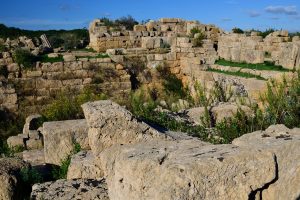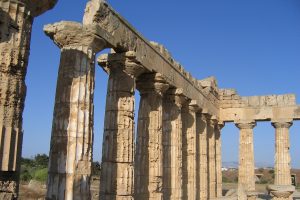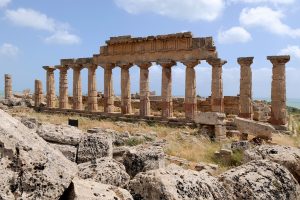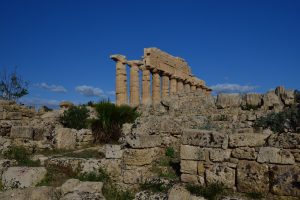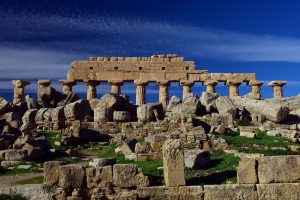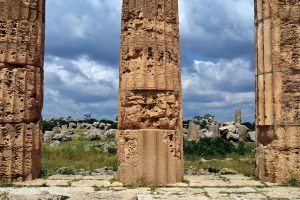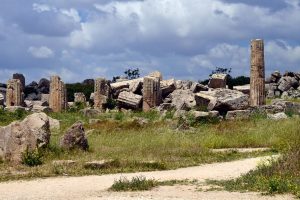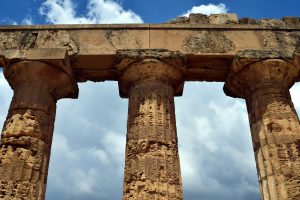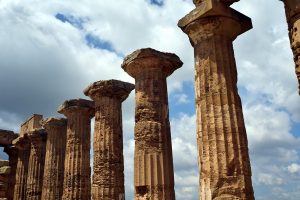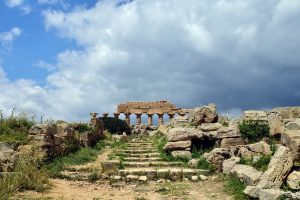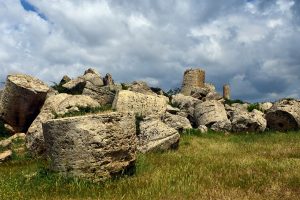THIS TOUR IS ONLY OFFERED IN COMBINATION WITH OTHER SERVICES INCLUDING TRANSPORTATION FROM OTHER SICILIAN CITIES
Selinunte Walking Tour with Private licensed local Guide
Visit the ruins of the archaeological park of Selinunte (Admission fee: not included) with a private licensed local Guide and discover how the glory of ancient Selinus lasted for about two centuries, from the seventh century BC to the fifth century BC, when it was destroyed.
The appointment will be set directly at the ticket office. More details will be provided at time of booking.
Please note:
The Guide will be at Your disposal for maximum 3 hours.
TRANSPORTATION:
Private transportation is not included in this service. In case you do need to move using cab (taxi) feel free to ask to the Local Guide to help you to orchestrate this service. You can pay the amount cash on the spot.
LICENSED LOCAL GUIDE:
This walking tour does include Licensed Local Guide.
MAXIMUM GROUP SIZE: 50 people
LANGUAGE:
Italian, English, French, Spanish, German.
Subject to availability at time of booking.
TOUR DETAILS & BOOKING INFORMATION
ADMISSION FEES:
The price of this walking does not include the Admission Fees (entrance payable on the spot). If you are under 18 years old the admission fees are free of charge for you showing your document (or copy of your document) on the spot.
DISABLED TRAVELERS:
Disabled Travel are not recommended for a walking tour.
AS REGARDS SELINUNTE:
To the classical historian, both temples and celery come to mind when one thinks of Selinunte, the ancient Selinus of the Greeks. The temples are fairly obvious, the celery less so. Yet the English and Italian words for the stalky vegetable derive from sedanus, which in turn comes to us from selinon (there was also a mythical king named ‘Selinus’), and indeed celery grew wild around Selinus, particularly along the river of that name.
The site of this important Siceliot (Sicilian-Greek) city of antiquity bears the ruins of an acropolis and numerous temples, though much of what is standing today was reconstructed from pieces found in the vicinity. The city was founded by Doric Greek colonists from Sicily’s Megara Hyblea between 650 and 630 BC and effectively destroyed in 409 BC. The glory of ancient Selinus lasted for about two centuries, when it was one of the most progressive Greek cities in Sicily, famous throughout Magna Graecia.
The site of the city remained an abandoned ruin for centuries, through the Roman period and into the early medieval era. Around 700 AD, a small Byzantine Greek village grew up around the ancient ruins. However, a serious earthquake destroyed that village and further damaged what was left of Selinunte early in the ninth century, just prior to the arrival of the Arabs in Sicily.
The site’s temples are identified by letter. Some of the famed “metopes,” stone-carved panels depicting various scenes from Greek mythology, currently on display in Palermo’s regional archeological museum, came from Temple E.
Temple F is located right next to Temple E, built circa 550 BC. This temple may have been dedicated to the bacchanalian deity, Dionysos. It may have also contained the temple treasury, as there are signs that the spaces between the columns were enclosed.
Temple G, the last and largest of the trio, was larger. It is thought to have been built around 530 BC, but was never completed. This large temple was the fourth largest Greek temple ever built, not only in Sicily but in all the Greek world. Unfortunately, only one large column is still standing. The rest of Temple G is a great pile of large stones.
The actual city of Selinus, the acropolis, is located west of the “eastern temples,” built on high ground looking toward the sea. It was once flanked by two small rivers, one on each side of the city. The walls surrounding the acropolis were reconstructed under the direction of archaeologists in 1927, though a few segments have stood since antiquity. Ancient sources gave the city a population of over twenty thousand, a figure supported by the size of the acropolis.
Within the acropolis are the foundations of five temples, of which only Temple C is in discernible condition.
As you follow the road leading west of the acropolis, you cross the Modione River (the ancient “Selinus”), arriving at the western end buildings on the hills. The principal structure here is the “Sanctuary of Demeter Malophoros” (the fruit bearer), a large enclosure. Inside are the ruins of several shrines where worshipers placed stone figurines whose purpose was to honor or appease the gods. Many of these “stellae” have been recovered and placed in museums, and a number are displayed in Palermo. The sanctuary is thought to date from the 6th century BC. Next to it is the Sanctuary of Zeus.
TOUR CODE: SELWALK
- Category
- Location
- Days1
- Duration3 Hours
- CategoryWalking Tour
- Tour TypePrivate
- SeasonALL YEAR
